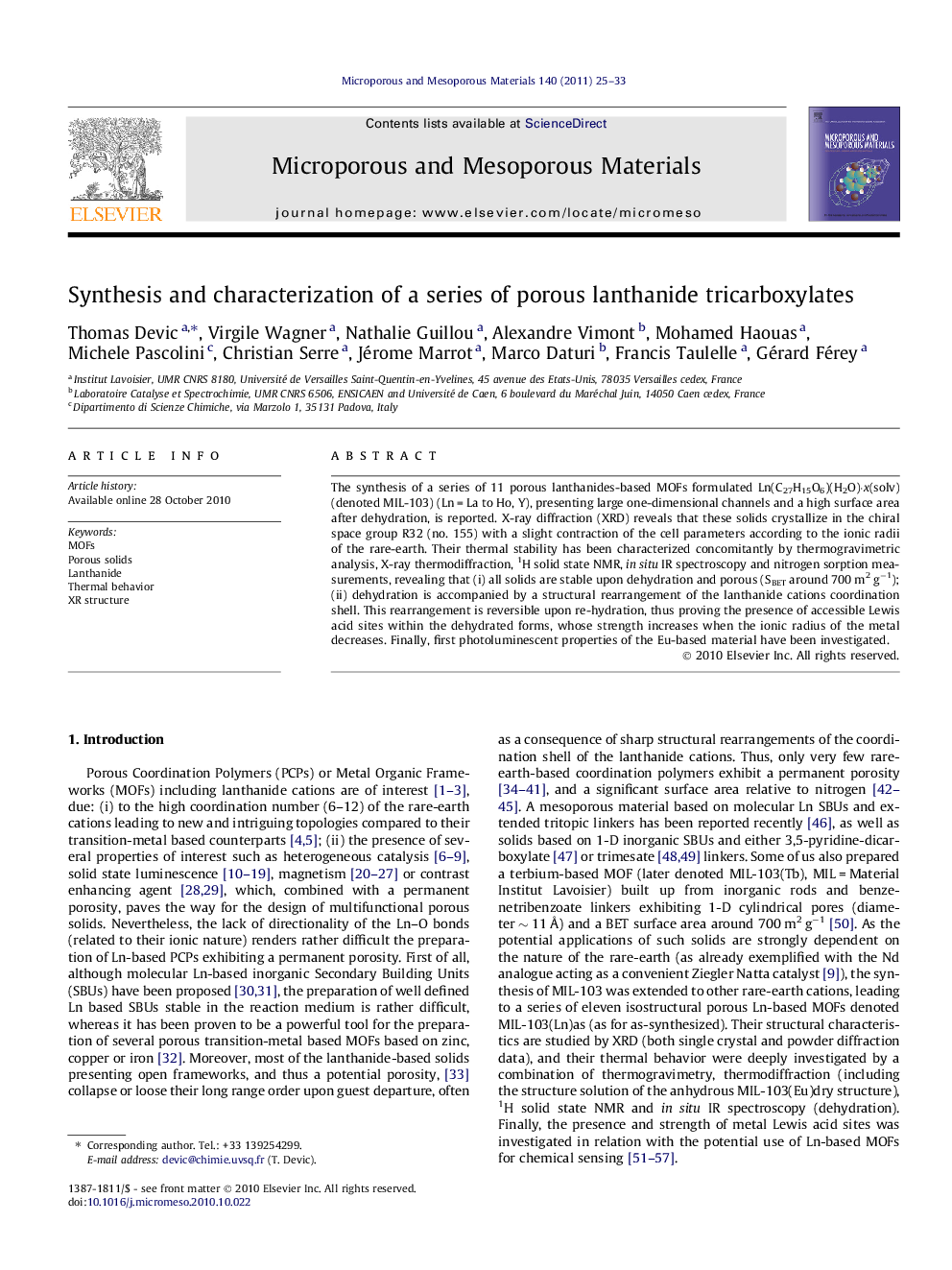| Article ID | Journal | Published Year | Pages | File Type |
|---|---|---|---|---|
| 74019 | Microporous and Mesoporous Materials | 2011 | 9 Pages |
The synthesis of a series of 11 porous lanthanides-based MOFs formulated Ln(C27H15O6)(H2O)·x(solv) (denoted MIL-103) (Ln = La to Ho, Y), presenting large one-dimensional channels and a high surface area after dehydration, is reported. X-ray diffraction (XRD) reveals that these solids crystallize in the chiral space group R32 (no. 155) with a slight contraction of the cell parameters according to the ionic radii of the rare-earth. Their thermal stability has been characterized concomitantly by thermogravimetric analysis, X-ray thermodiffraction, 1H solid state NMR, in situ IR spectroscopy and nitrogen sorption measurements, revealing that (i) all solids are stable upon dehydration and porous (SBET around 700 m2 g−1); (ii) dehydration is accompanied by a structural rearrangement of the lanthanide cations coordination shell. This rearrangement is reversible upon re-hydration, thus proving the presence of accessible Lewis acid sites within the dehydrated forms, whose strength increases when the ionic radius of the metal decreases. Finally, first photoluminescent properties of the Eu-based material have been investigated.
Graphical abstractFigure optionsDownload full-size imageDownload as PowerPoint slideResearch highlights► Microporous lanthanide-based MOFs. ► Series of eleven isostructural compounds. ► Lewis acidity dependent on the nature of the lanthanide cations.
